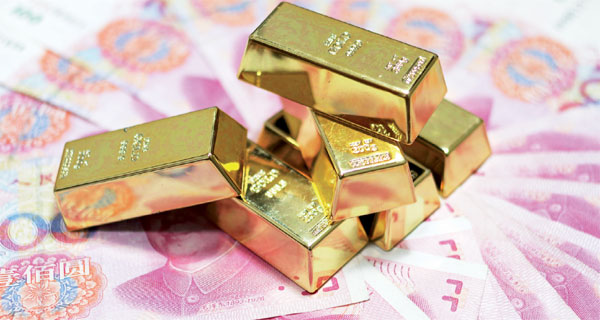Peru looks to expand exports to China
Source: www.chinamining.org Citation: China Daily Latin America Date: July 30, 2015
The Consul General of Peru in Guangzhou expects the trade between China and his country to continue its robust momentum and generate 20 percent growth this year, while looking to export more categories of products to China.
Bilateral trade between the two countries stood at $16 billion last year, with products exported to China including minerals, fishmeal and fruits, and those imported from China including machinery, telecommunications equipment and chemicals, said David Gamarra Silva.
Two-way trade has been increasing since the free trade agreement (FTA) between the two economies took effect in 2010, he said.
China is Peru¡¯s largest trading partner and Peru is China¡¯s fifth largest partner in Latin America.
Starting this month (July), avocadoes from Peru will enter the Chinese market to join grapes, mangoes, oranges and lemons.
Gamarra hopes, through the FTA, to expand the trade to more fields and enable more small and medium-sized enterprises to export their products, such as jewelry made of pearls, gold and silver, and wool-made handicrafts, to China.
With a long coastline, his country is also developing the aquatic products industry.
However, many Peruvian businesses have no idea how to export their products to China and Gamarra¡¯s team provided guidance in business promotion to some Peruvian SMEs attending the China Import and Export Fair in Guangzhou in April and May.
Guangdong JMA Aluminum Profile Factory (Group) Co, one of the largest Chinese aluminum profile producers, sees a sizable demand in Peru and is seeking partners in the South American country, said Lin Runqu, manager of the export department.
The company plans to attend an international trade show of building materials in Lima, Peru’s capital, later this year.
Guangdong Homa Appliances Co, one of the largest refrigerator and freezer exporters of China, expected its sale to Peru to skyrocket from 3,000 units last year to 30,000 units this year, said Michael Yao, vice-president for sales and marketing.
He attributed the strong momentum to the relatively low tariff and the rising consumption in the Peruvian economy, adding the historical link with people with Chinese origin helps to advance the cooperation between the two economies.
Homa plans to expand its presence in emerging markets, including Peru, by developing new models and strengthening the cooperation with local distributors, brands and manufacturers, Yao said.
Meanwhile, Gamarra hopes that more Chinese investment could flow into Peru to produce higher value-added products, including in the mining industry and into infrastructure.
By the end of last year, Chinese investment into Peru had amounted to $18 billion, extending to sectors such as mining, forestry, fishery, construction and real estate.
He also sees the potential of bringing Peruvian businesses to the free trade zones in Guangdong, which offers incentives to foreign investors.
Gamarra takes special interest in promoting cultural exchanges between his country and South China, pointing to the fact that 12 percent of the Peruvian population of 30 million has Chinese origin.
Peruvians are familiar with Chinese culture and all provinces have many Chinese restaurants, which are called chifas, with similar pronunciation of Chinese word "have meal," he said.
Nearly 90 percent of Peruvian Chinese can trace their roots to cities like Guangzhou, Zhongshan, Jiangmen and Taishan in Guangdong province.
Gamarra is devoted to disseminating Peruvian culture in Guangdong, with links already forged between a number of universities in Peru and Guangdong, and an exhibition of photos depicting the Chinese migrants on his mind.
With his consulate general in Guangzhou formally launched last month, Gamarra pledged efficient visa service to Chinese travelers, 24 hours upon the collection of necessary documents to qualified applicants.
"Chinese travelers to Peru totaled 16,000 last year. China is a huge country and we want to increase that," Gamarra said.
About CHINA MINING
Since first held in 1999, the scope and influence of CHINA MINING has grown rapidly year by year. As a global mining summit forum and exhibition, CHINA MINING Congress and Expo has become one of the world’s top mining events, and one of the world’s largest mining exploration, development and trading platforms, covering all aspects of the whole mining industry chain, including geological survey, exploration and development, mining rights trading, mining investment and financing, smelting and processing, mining techniques and equipment, mining services, etc. playing an active promotion role in creating exchange opportunities and enhancing mutual cooperation between domestic and foreign mining enterprises.
CHINA MINING Congress and Expo 2015 will be held at Meijiang Convention and Exhibition Center in Tianjin on November 20th-23rd, 2015. We invite you to join the event and to celebrate the 17th anniversary of CHINA MINING with us. For more information about CHINA MINING 2015, please visit: www.chinaminingtj.org.




